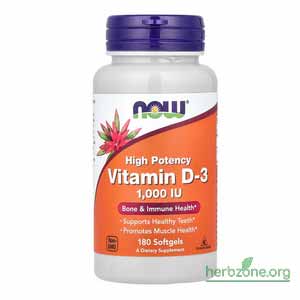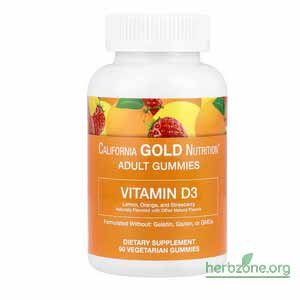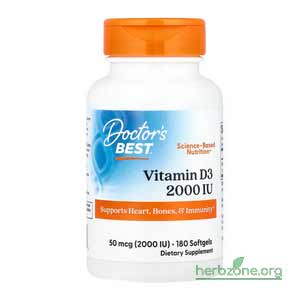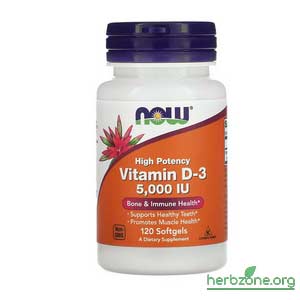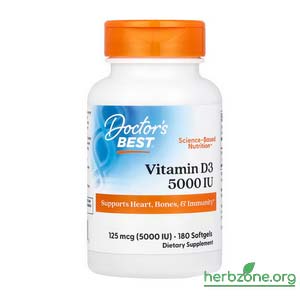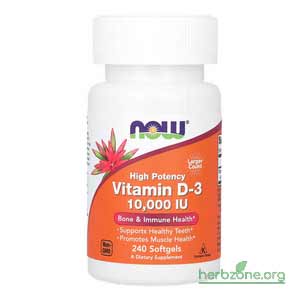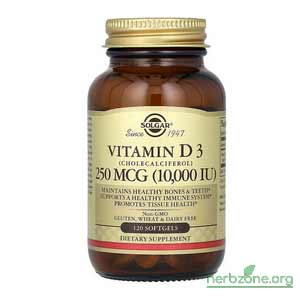We have repeatedly emphasized the importance of maintaining normal vitamin D levels, avoiding both deficiency and excess (which is more harmful to the body than a lack of this nutrient). Vitamin D is not only essential for healthy, strong bones but also the foundation of our immune system. However, many people around the world suffer from vitamin D deficiency, which leads to various health issues. Together with Herbzone, we will explore how to identify vitamin D deficiency and how to restore it to normal levels.
In This Article:
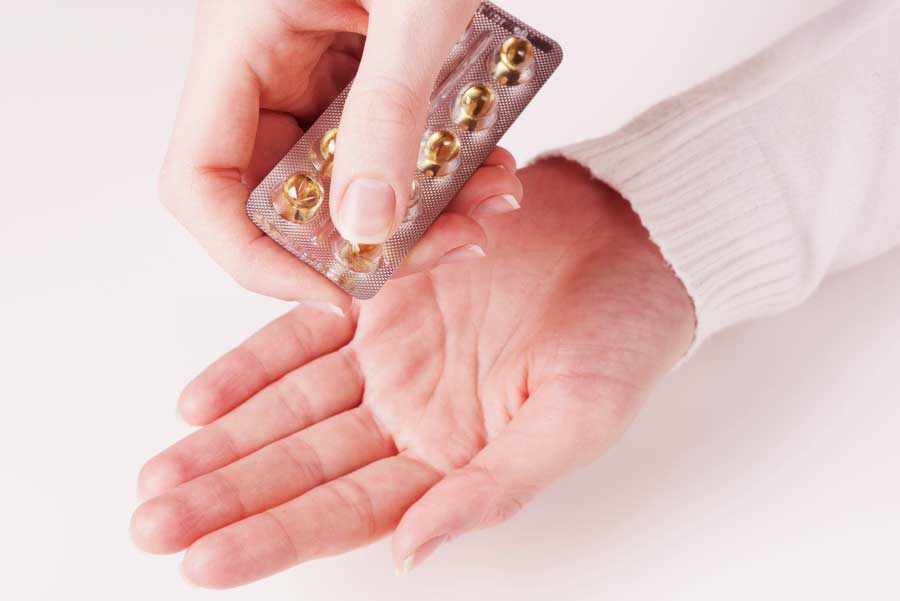
Causes of Low Vitamin D Levels
Vitamin D deficiency can be caused by both external and internal factors. It may arise due to lifestyle, diet, or even physiological characteristics of the body. Let’s review the main reasons that can lead to a deficiency of this important vitamin.
- Low Sunlight Exposure
The primary source of vitamin D is sunlight. When the skin is exposed to ultraviolet B (UVB) rays, it synthesizes vitamin D. In regions with cold winters or low sunlight levels, especially in northern areas, people may have a vitamin D deficiency. The risk also increases for those who spend most of their time indoors or use sunscreen frequently. - Poor Diet
Vitamin D is found in a limited number of foods. Fatty fish (salmon, mackerel, tuna), eggs, and fortified products such as milk and cereals contain the highest amounts of vitamin D. If your diet lacks these foods, it may lead to a deficiency. - Problems with Vitamin D Absorption
Certain conditions, such as celiac disease, Crohn’s disease, or chronic liver and kidney disorders, can impair the body’s ability to absorb vitamin D from food. This also applies to people who have undergone surgeries affecting the digestive tract, such as stomach surgery. - Age-Related Changes
As people age, their skin’s ability to produce vitamin D decreases. Older adults also more frequently experience liver or kidney dysfunction, which can also affect the body’s ability to synthesize vitamin D. - Dark Skin Tone
People with dark skin have a higher level of melanin, which reduces the skin’s ability to produce vitamin D in response to sunlight. Therefore, those with dark skin may be more prone to vitamin D deficiency. - Obesity
Since vitamin D is fat-soluble, it can accumulate in fat tissue in overweight individuals, reducing its availability to the body. This leads to a vitamin D deficiency.

Symptoms of Vitamin D Deficiency
Hypovitaminosis D can manifest through various symptoms, which may initially be subtle. It is important to pay attention to any changes in how you feel, as they may be linked to a lack of this vitamin. Let’s review the main signs of vitamin D deficiency in the body.
| Symptom | Description |
| Weakness and Fatigue | One of the first signs of vitamin D deficiency is feeling tired even after adequate sleep. Vitamin D is important for energy production in the body. |
| Bone and Muscle Pain | Vitamin D helps with calcium absorption, necessary for bone health. Deficiency can lead to pain in bones and muscles, as well as frequent fractures. |
| Reduced Immunity | Vitamin D supports immune system function. Its deficiency can make the body more susceptible to infections, colds, and autoimmune diseases. |
| Mood Disorders and Depression | Low levels of vitamin D are associated with depressive symptoms. People with deficiency may feel overall fatigue and mood disturbances. |
| Skin Cracks and Dryness | Vitamin D deficiency can cause dry skin, cracks, and issues with wound healing, as it is crucial for skin health. |
| Hair Loss | Vitamin D deficiency may be a cause of hair loss, especially in women, due to disruptions in the hair growth cycle. |
Treatment for Low Vitamin D Levels
To determine the degree of vitamin D deficiency, a blood test for 25(OH)D (25-hydroxyvitamin D) levels is needed, as this is the primary marker for assessing vitamin D stores.
| 25(OH)D Blood Level | Deficiency Level | Recommended Action |
| >30 ng/mL (75 nmol/L) | Normal Level | Maintain normal vitamin D levels through sun exposure and a healthy diet. |
| 20-30 ng/mL (50-75 nmol/L) | Mild Deficiency | Additional vitamin D sources may be helpful, especially in winter. |
| 10-20 ng/mL (25-50 nmol/L) | Moderate Deficiency | Begin supplementing to normalize levels. |
| <10 ng/mL (<25 nmol/L) | Severe Deficiency | Immediate treatment under a doctor’s supervision, possibly with high doses of vitamin D. |
If vitamin D deficiency is suspected, a blood test for this vitamin should be done. Based on the results, conclusions can be made. Treatment may involve various methods, depending on the deficiency level and individual needs.
Main Ways to Increase Vitamin D Levels
1. Natural Sources of Vitamin D
The best way to combat vitamin D deficiency is to increase sun exposure, as ultraviolet rays stimulate vitamin D production in the skin. Spending a quarter to half an hour outdoors daily, especially in warm months, is recommended. However, it is important to note that in winter, sunlight may be insufficient to restore vitamin D levels to normal.
Recommended Sun Exposure for Vitamin D Production (600-800 IU per day) Without Sunscreen:
| Season/Latitude | Fair Skin (III Skin Type) | Dark Skin (V-VI Skin Type) |
| Summer (Temperate Climate) | 10-30 min (face, arms, legs) 3-4 times a week | 30-60 min 3-4 times a week |
| Spring/Fall | 15-40 min | 40-90 min |
| Winter (Temperate Climate, Latitude > 35°) | Insufficient UV rays for vitamin D production | Deficiency, supplements needed |
Factors Influencing Vitamin D Synthesis:
- Time of Day: The most effective sun exposure is between 10:00 AM and 3:00 PM, when UVB rays reach the Earth at the optimal angle.
- Geography: The further from the equator, the less sunlight in winter. In Northern Europe, vitamin D production is almost impossible from November to February.
- Skin Type: Dark skin contains more melanin, acting as a natural sunscreen, so people with dark skin need more time in the sun.
- Clothing and Sunscreen: Clothing and sunscreen with SPF 30 or higher reduce vitamin D synthesis by more than 90%.
- Age: Older people produce vitamin D in their skin at half the rate of younger individuals.
Can You Get Too Much Vitamin D from the Sun?
No, the body regulates vitamin D production. Excess vitamin D produced during prolonged sun exposure is broken down naturally. However, excessive sun exposure can increase the risk of premature skin aging and skin cancer.

2. Dietary Supplements
If sunlight is insufficient or vitamin D is hard to obtain from food, supplements are recommended. Below is a table with suggested vitamin D dosages in supplements and recommendations for use in cases of deficiency:
Recommended Vitamin D Dosages in Supplements for Deficiency:
| Deficiency Level | Recommended Daily Dosage (IU) | Notes |
| Mild | 800-1000 IU | Usually sufficient for mild deficiency. Add vitamin D to diet through food or supplements. |
| Moderate | 1000-2000 IU | To correct deficiency, especially in winter or when sunlight is low. |
| Severe | 3000-5000 IU | Prescribed by a doctor for severe deficiency, especially with low blood levels. |
| Critical | 5000-10000 IU | Used under medical supervision to quickly restore vitamin D levels. |
Main Sources of Vitamin D in Supplements:
- Vitamin D3 (Cholecalciferol) – The most effective form for increasing vitamin D levels in the body.
- Vitamin D2 (Ergocalciferol) – Less effective but also used in supplements, especially for vegans.
Choosing the Dosage:
- For mild deficiency or prevention, 800-1000 IU per day is usually enough.
- For moderate deficiency, 1000-2000 IU may be recommended to gradually normalize levels.
- For severe deficiency, doctors may prescribe 3000-5000 IU per day for rapid correction.
- In cases of critical deficiency, doctors may recommend 5000-10000 IU per day, but these doses should only be used under medical supervision.
Recommendation:
Vitamin D supplements should be taken after meals since they are fat-soluble, which helps improve absorption.
On iHerb, you can find vitamin D supplements in dosages of 1000, 2000, 5000, and 10000 IU. Below, we offer the best options with tens (even hundreds) of thousands of positive reviews:
1,000 IU:
2,000 IU:
5,000 IU:
10,000 IU:
3. Dietary Considerations
Enriching your diet with vitamin D-rich foods is also an important part of treatment. These include fatty fish (salmon, tuna), dairy products (fortified with vitamin D), eggs, mushrooms, and specially fortified cereals and juices.

Here is a table showing how much food you need to eat to reach the daily recommended intake of vitamin D (600-800 IU for adults). The vitamin D content is listed for commonly consumed portions.
Vitamin D Content in Food: How Much to Eat for the Daily Requirement
| Product | Vitamin D Content (IU per Serving) | Servings Needed for Daily Requirement (600-800 IU) |
| Salmon (raw, 100 g) | 570 IU | 1 serving (100 g) to reach 570 IU |
| Tuna (canned in its own juice, 100 g) | 236 IU | 2.5 servings (250 g) |
| Mackerel (100 g) | 360 IU | 1.5 servings (150 g) |
| Sardines (canned, 100 g) | 270 IU | 2.5 servings (250 g) |
| Cod (100 g) | 570 IU | 1 serving (100 g) to reach 570 IU |
| Eggs (1 large egg, 50 g) | 41 IU | 15–20 eggs per day (this is much more than the usual amount) |
| Milk (1 cup, 240 mL) | 120 IU | 5–7 cups of milk |
| Yogurt (1 cup, 240 mL) | 80 IU | 8-10 cups of yogurt |
| Mushrooms (100 g serving, UV light treated) | 450 IU | 1.5 servings (150 g) |
| Fortified juices (orange juice, 1 cup, 240 mL) | 100 IU | 6–8 cups of juice |
| Fortified cereals (1 serving, 40 g) | 100-150 IU | 5–8 servings of cereal |
Conclusion
Vitamin D deficiency is a common issue that negatively impacts the overall health of the body. The best ways to prevent it include moderate sun exposure, a balanced diet, and, if necessary, taking supplements.
Use promo code ANB8206 to get a 5-30% discount on all purchases!
This code can be applied to every order!


